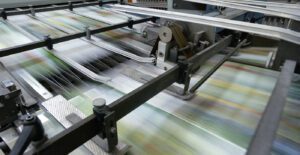Exploring the Latest Advancements in Digital Printing
Digital printing has come a long way since its inception, revolutionizing the world of printing and providing unprecedented opportunities for businesses and individuals alike. From small-scale personalized printing to large-scale commercial printing, digital printing technologies continue to evolve, offering enhanced capabilities, improved efficiency, and higher quality outputs. In this blog post, we will explore the latest advancements in digital printing technologies that are shaping the future of the printing industry.
High-Speed and High-Quality Inkjet Printing: Inkjet printing has been a popular choice for digital printing due to its versatility and cost-effectiveness. In recent years, there have been significant advancements in high-speed and high-quality inkjet printing technologies. These innovations have enabled digital printers to achieve faster print speeds without compromising on print quality. High-speed inkjet printers are now capable of printing thousands of pages per minute, making them ideal for commercial printing applications, such as direct mail, promotional materials, and packaging. The improved print quality and color accuracy of inkjet printers have also made them suitable for applications that require photographic-level image reproduction, such as fine art printing and high-end photo books.
3D Printing: 3D printing, also known as additive manufacturing, has gained immense popularity in recent years due to its ability to create three-dimensional objects layer by layer. While 3D printing is primarily used in manufacturing and prototyping, there has been a growing interest in using 3D printing for custom packaging, product design, and even fashion. Digital printing technologies have played a significant role in advancing 3D printing, allowing for more precise and intricate designs. The combination of digital printing and 3D printing has opened up new possibilities for creating unique and personalized products that were once unimaginable.
Variable Data Printing (VDP): Variable Data Printing (VDP) is a form of digital printing that allows for customization and personalization of printed materials. VDP has gained significant traction in the marketing and advertising industry as it allows businesses to create tailored content for individual recipients, making their printed materials more engaging and relevant. With VDP, businesses can customize text, images, and other elements of a printed piece based on recipient data, such as name, location, interests, and more. This level of personalization has proven to be highly effective in improving response rates and customer engagement, making VDP a powerful tool in the digital printing arsenal.
UV Printing: UV printing is a digital printing technology that uses UV-curable inks that are instantly cured with UV light. This process allows for faster drying times, reduced ink consumption, and improved print quality compared to traditional solvent or water-based inks. UV printing is known for its versatility as it can print on a wide range of substrates, including plastics, glass, wood, metal, and more. This makes it suitable for applications such as signage, packaging, labels, and promotional products. UV printing has also gained popularity due to its environmentally friendly nature, as it emits lower levels of volatile organic compounds (VOCs) compared to other printing technologies.
Automation and Artificial Intelligence (AI): Automation and AI are transforming the digital printing industry by streamlining the printing process, reducing costs, and improving print quality. Automated workflows, robotic systems, and AI-powered algorithms are being integrated into digital printing technologies to optimize print production, reduce human errors, and increase efficiency. AI is also being used to analyze and process large amounts of data to improve color accuracy, image resolution, and print quality. Additionally, AI-powered software is being used to automate the pre-press process, such as image editing, color management, and file preparation, making digital printing more accessible to a wider range of users.
Contact Us!
Digital printing technologies are constantly evolving, offering exciting alternatives to traditional offset printing and other manufacturing techniques. Contact Day & Night to see if the latest in digital printing might be the right fit for your next project.







